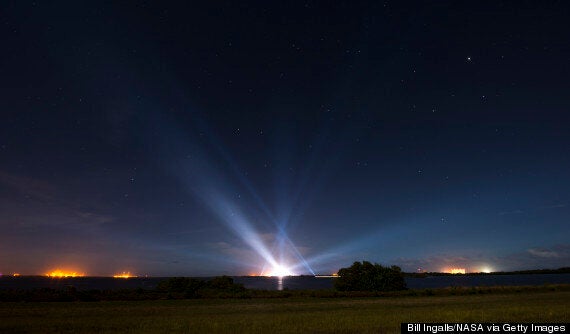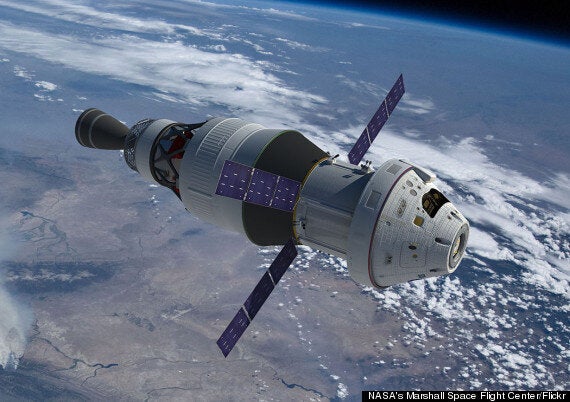At 12.05 GMT NASA will launch the Orion spacecraft into space for the first time, marking the beginning of NASA's roadmap to Mars as well as the space organisations first step towards human space exploration.
Aboard a Delta IV Heavy Rocket, the unmanned Orion spacecraft will launch along with a four-module spacecraft, it will then circle the Earth twice and finally re-enter the Earth's atmosphere, enduring temperatures of over 3,000 degrees and travelling at speeds of up to 20,000mph.
This will be a crucial test for NASA, it's the first time that the spacecraft has been used in space and it'll be a crucial learning window which will allow them to hone the craft's capabilities before they start using it to transport humans.

To stay on top of all things Orion here are 8 things you need to know:
1. Where can I watch the launch?
Well that's easy, you can watch it right here at 12:05 GMT:
2. What is Orion?
Orion is a spacecraft built by NASA and Lockheed Martin. If it looks familiar that's because NASA isn't taking any risks, it's built on the same tried and test designs that saw astronauts fly to the Moon. Orion however is not that spacecraft, it's hundreds of times more advanced, larger and more capable.

3. How many people can it hold?
Inside there's room for four astronauts. Two pilots at the top will have access to a new state-of-the-art 'Glass' control panel that consists of four large touch screens.
NASA's new control panel will allow astronauts to pilot the entire craft using nothing but the touchscreen computers and just 60 physical switches.
4. Surely it's more than just a capsule?
It is, Orion now consists of three distinct stages: A Launch Abort System which can rocket the crew module away from the rocket in the case of an emergency.
Behind the crew module there's a service module which can provide oxygen, water, collect power through the solar panels and provide thrust.
5. What will the test consist of?
The test will take around four and a half hours, during which Orion will be launched to an altitude of 3,600 miles, that's around 15 times the altitude of the International Space Station.
Orion will then orbit the Earth twice during which NASA will run full diagnostics of the crew module and the service module checking its systems.
6. How long will it take?
After around four hours Orion will begin its descent back to Earth. By flying Orion at such a high orbit NASA will be able to replicate the re-entry speed that only humans who have been exploring will experience.
7. What will happen on re-entry?
It'll hit the atmosphere at around 20,000 mph at which point Orion's heat shield will be put to the test. After having travelled into deep space and back the heat shield will then have to endure temperatures of over 4,800 degrees with nothing but hot plasma punishing its surface.
If you think that's bad, that's just 80 per cent of what the module would experience if it was returning from the Moon.
8. What will NASA send up there?
Mostly it'll be computer instruments designed to test and analyse every aspect of the launch.
That said, NASA has confirmed it will continue the tradition of sending trinkets and souvenirs into space so along with millions of dollars of equipment you'll find Iron Man, Captain Kirk and a microchip carrying over a million names.
Oh and there's a cookie, lunar soil, recordings of Holst's The Planets and a tiny model of the DeLorean from Back To The Future.